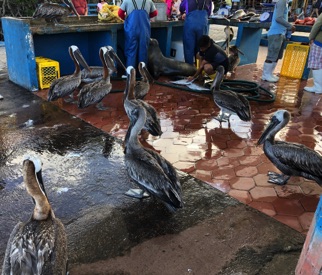MachuPicchu & the Galapagos 2019
Part E: The Galapagos

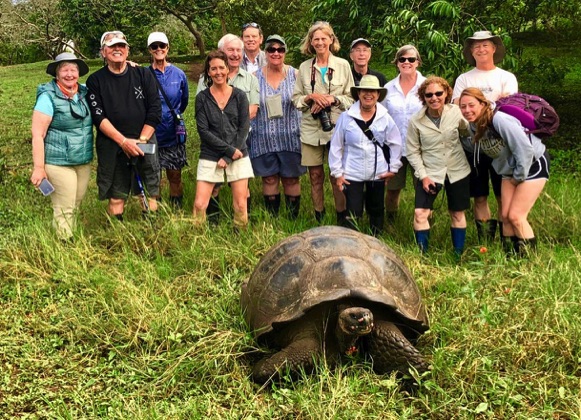
Thanks for traveling with us!

It's only fitting as we make our way from the Isla San Cristobal airport to our bus to our Galapagos catamaran that we pass by a bar and grill welcoming the band of Islanders from Coronado. A coincidence lost on the others.
Right, we pose with a 100+ year-old giant tortoise.
Fascinating society where conflicts can be resolved by which tortoise can stretch his neck the longest! Size DOES matter!
The odd thing about the Galapagos is that there was no "wow" moment. Nothing like when you walked passed the straw-roofed hut and got your first glimpse of the heart of MachuPicchu. On the islands, enchantment was everywhere.
Was it your first sighting of the comical, blue-footed boobies? Or the soaring, magnificent frigate birds or the red-billed tropic bird or the Nazca booby trying to down a large fish? Or perhaps it was the small marine iguanas or the larger and more colorful land iguanas? Or boobies and pelicans diving into the water to catch dinner?
Instead, could it have been the sea turtle as it seemed to struggle to make headway, or the eagle rays, or the white-tipped reef sharks? We snorkeled with the last two, along with frolicking sea lions and thousands of reef fish in dizzying arrays of color. (Note: We were told the sharks are vegetarians.)
Could anything be better than to walk among the 100+ year-old giant land tortoises? We were too late to catch a live glimpse of Lonesome George except to view his taxidermied body.
Or maybe it was the welcoming crew aboard our 85-foot catamaran, the Archipell II (below): from Captain Francisco to chief bartender and salsa dancer, Francisco, to Mildred, Johnny & Ronnie, David, Hector, Alex and Jose? They didn't speak much English, but they made us feel like long-lost friends. They cooked our food and served us drinks; they helped our transition from the boat to the pangas (zodiacs!); they welcomed us back with fruit juices and a snack; they teamed with our Galapagos guide, Luis, to make us feel at home on the water.
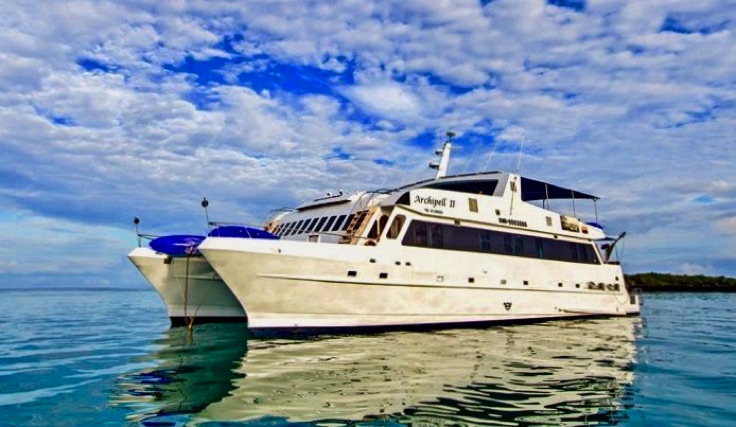
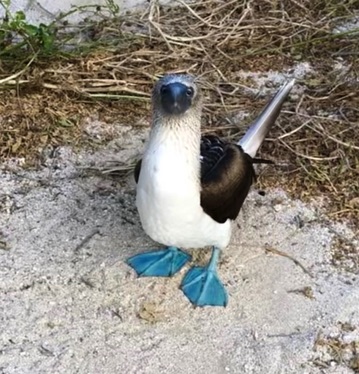


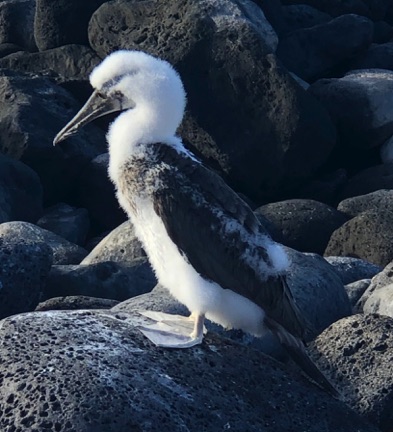
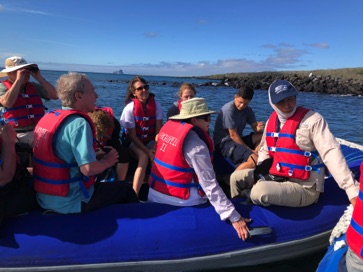

Blue-footed boobies; top right is an immature magnificent frigate bird; when the male is a'courtin', he puffs out his bright red air sac beneath his throat. Luis leads a panga crew; right is the streamlined red-billed tropic bird: so graceful!
The Galapagos Islands ('islands of the tortoises') are an archipelago of 21 volcanic islands that straddle the equator about 570 miles west of Ecuador. Made famous by Charles Darwin and the voyage of the HMS Beagle from England in the 1830s (European sailors stumbled across the islands 300 years before), the islands proved a near-perfect laboratory to study species that had isolated themselves from their brethren on the mainland - and from other islands. Darwin's finches are the more famous of the endemic species but numerous other species - e.g., land and marine iguanas, a flightless cormorant, penguins, boobies, mockingbirds, tortoises - also are considered endemic. Darwin's discoveries led him to postulate the theory of natural selection as recorded in The Origin of the Species.
Most of the islands are within the Galapagos National Park and Marine Preserve. It might surprise you that more than 35,000 homo sapiens call the province of the Galapagos home; they are interspersed, mostly, among three of the larger islands. The tectonic plate of the Galapagos is separate from the mainland; it's estimated that the islands are moving 2.5 inches per year toward (and beneath) the mainland. Eruptions and lava flows continue to define the islands.
We visited a handful of the islands on our journey. We flew into Isla San Cristobol, then hiked on South Plaza, Santa Fe & Santiago. We departed from the Santa Cruz Island airport (actually, on Baltra Island). Travel to the islands is strictly regulated; only certain islands have landing sites, and groups may not linger on an island for long. Guides are required.

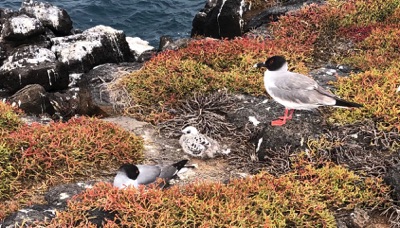
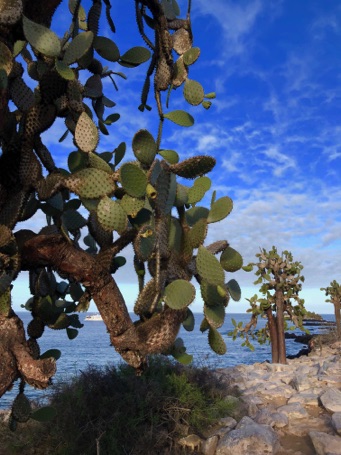


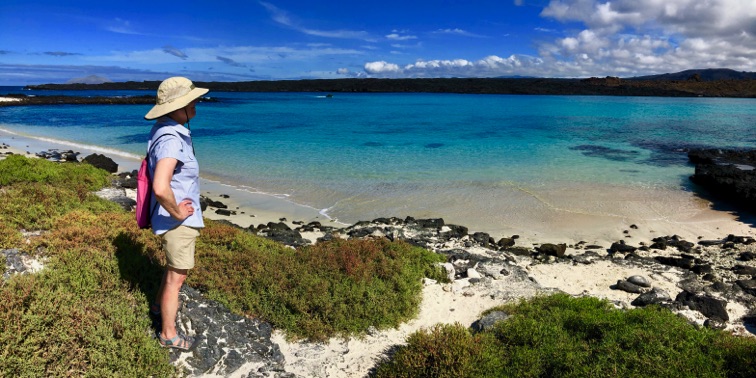
Swallow-tailed gulls make like love birds; their nest is on a rocky outcrop; birds simply had no fear of humans. Luis could call finches and warblers with the right sounds. Frigate birds loved to glide above our boat, riding the thermals, as we made it from island to island (they can't land on the water or they die!). Most of the islands we visited had sparse vegetation, quite desert-like in places. Below, Ellen looks north toward Santa Fe Island, hoping to spot a penguin? We got shut out, unfortunately.


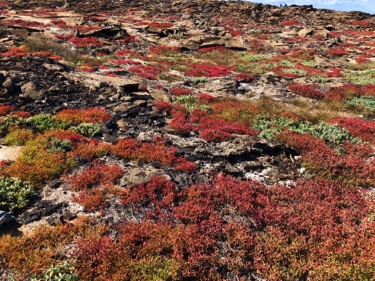
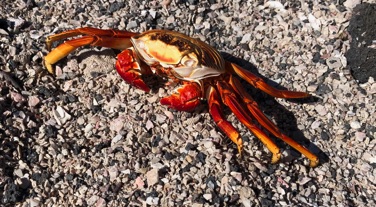
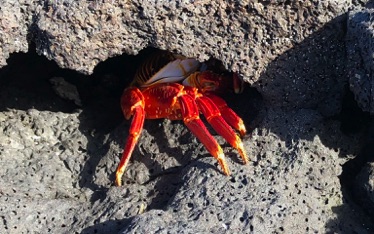

The brightly-colored Sally Lightfoot Crabs might have been the only animal that I ever saw scurry away from us. They were ubiquitous scavenging among the rocks along the shore; certainly easy to spot!



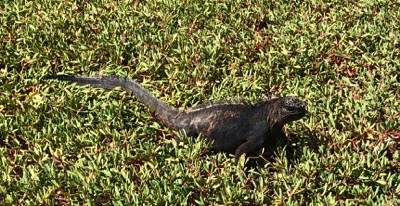
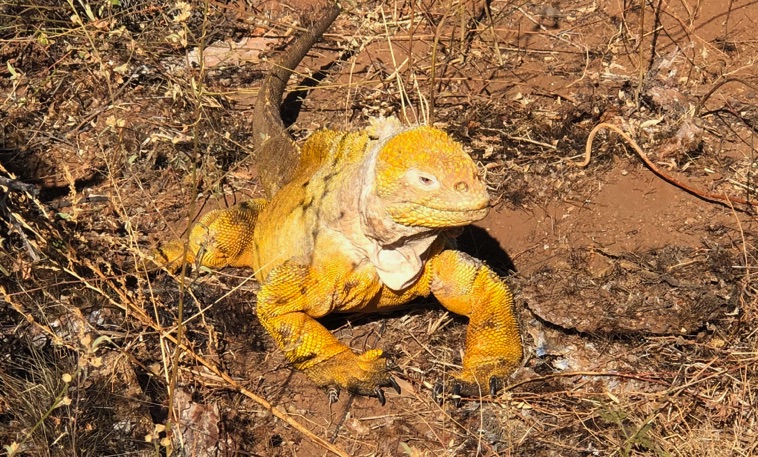
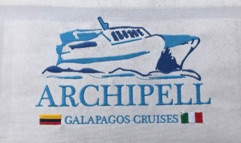


The iguanas were of particular interest. So majestic, yet so primitive, with a face only a mother could love.
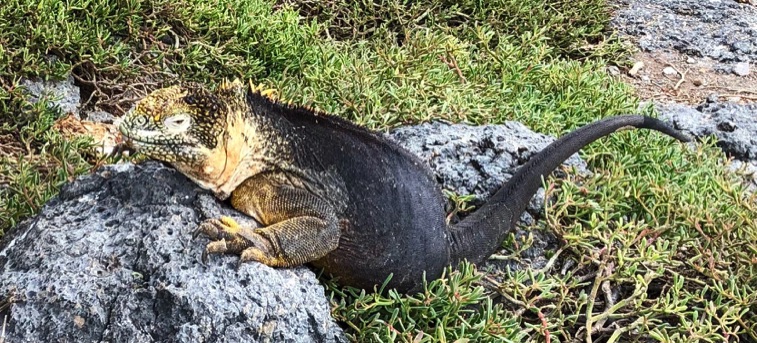

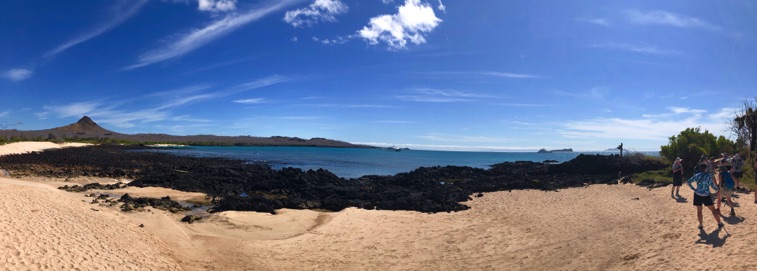

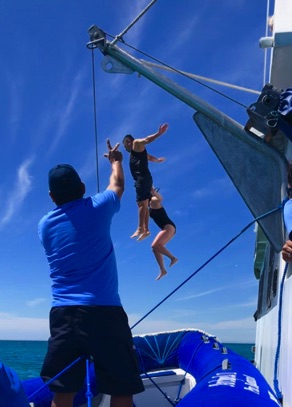
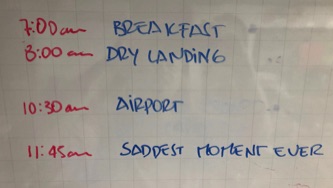

The sign to the right, part of our daily schedule and briefing: No truer words were spoken. We were lucky; we got to spend 17 days with close friends as well as with new friends; a good time was had by all. Thank you, Manuel, Vanessa, Luis, Andres, Capt. Francisco & the entire Archipell II crew and OAT staff here and at home. A truly memorable adventure. Adios!
Above left, Rick & Melinda show off their snorkeling styles; Sherry's ready for another island hike; Mason & Melinda show off their high school reunion visors (thanks, Steve!); and Tracy, left, can't get enough of the aquamarine ocean.
Below, we all pose as we leave the islands to board our catamaran for the last time. It's off to see the giant land tortoises of Isla Santa Cruz.


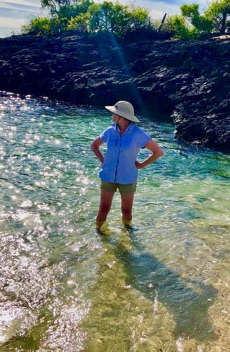




We spent only three nights aboard the catamaran, but it seemed much longer, considering all we got to see and do. Above, Luis scouts the island to make sure everyone is on board the panga; crew member Francisco and Leeanne jump from atop the boat; the water temp was about 70: nice for swimming, but all of us chickened out and wore wet suits when we snorkeled.
Below, Luis talks passionately about the ecology of the islands; Ellen poses as she awaits the arrival of the pangas ("Is it 5 o'clock yet?); Ellen photo-bombs yet another shot, this one of Mason booted up and ready to hunt for giant tortioses.
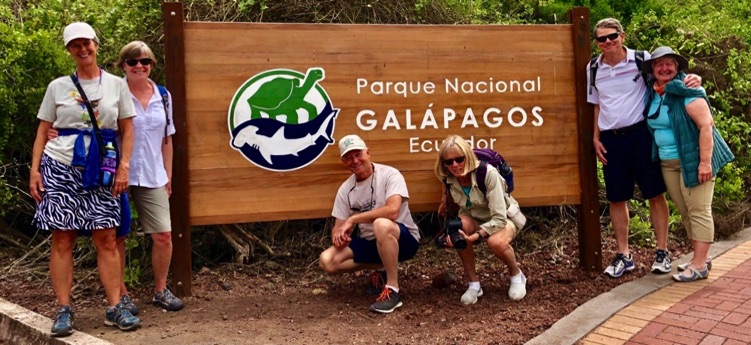

Melinda, Ellen, Rick, Sherry, Mason & Tracy get ready to explore the Charles Darwin Center. Here they breed tortoises for release back onto the islands. Nearby on the same island is a large tortoise preserve, where you can wander among the giants, carefully not touching or annoying the reptiles. A far cry from having your kids ride these majestic beasts at the San Diego Zoo.


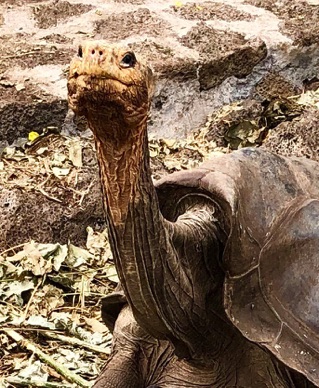
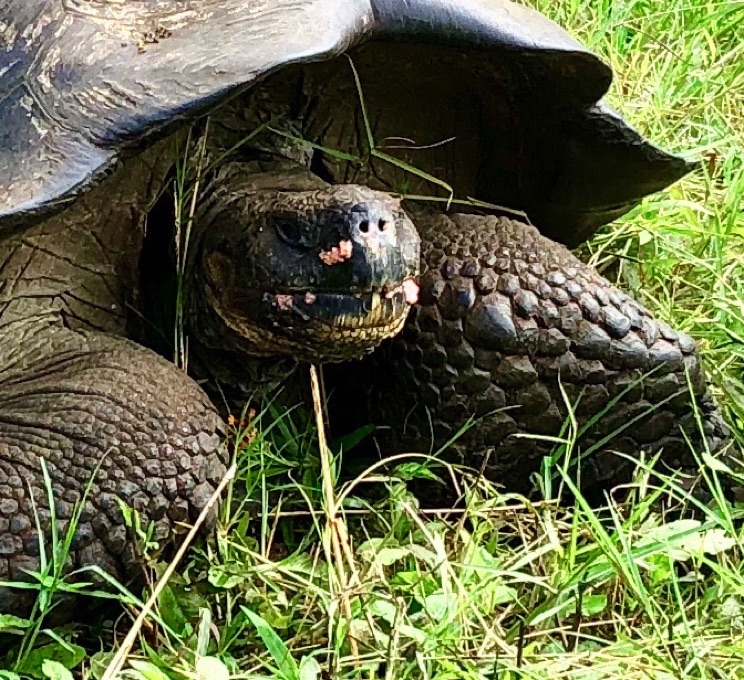
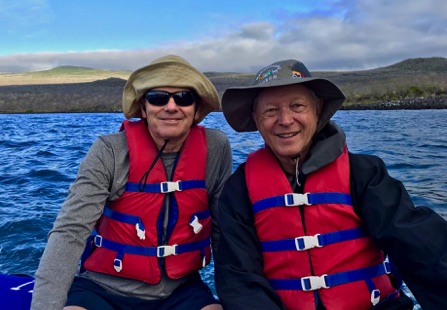

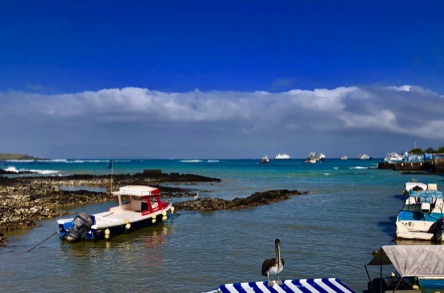
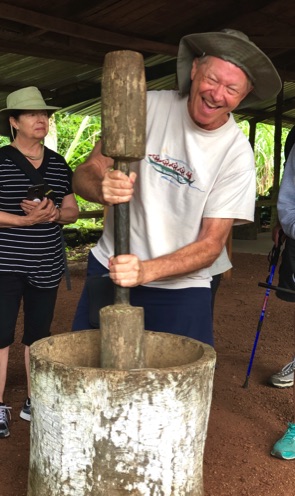
Fifty-two years of friendship; who would have thought I'd still be losing bets to Mason after all of these years (the '69 Super Bowl an exception)? Right, Rick pounds the beans; Yolanda, clearly, is not impressed.
Below and below right, the tiny harbor of Puerto Ayora (Isla Santa Cruz) on a sparkling day; the pelicans and sea lion line up for their morsels; a blue-footed booby hangs out on a wall right where we had lunch with this view.
